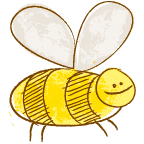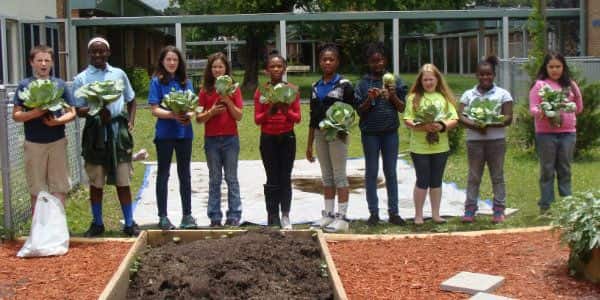School gardens can serve as living laboratories for many academic subjects. Whether students are performing soil tests, learning about nutrition, writing garden poetry or making instruments from gourds, the possibilities are endless.
Denise Spears, fifth-grade teacher and garden coordinator at Cedar Grove Elementary, has embraced this idea. With support from the principal and some of her teaching colleagues, Denise is working to strengthen connections between the garden and the academic curriculum in every grade. "It all started a few years back when I went to a workshop and found a book with lessons on gardening,” Denise says. “I incorporated some of those in my classroom, and since then some of my colleagues in third grade have also started working in the garden. Now we’re trying to get more grades involved.”
Denise has turned to resources such as the IFAS Master Gardener Program and Florida’s Gardening for Grades program to develop lesson plans and adapt them to support her district’s curriculum. "The garden gives us many opportunities for hands-on use of the district’s science and math standards,” says Principal Phillip Campbell. “It also allows us to take the concepts into real-life situations.”
"The garden gives us many opportunities for hands-on use of the district’s science and math standards.”
Fifth-grade students handled most of the original garden planning, built the 8’ x 10’ garden beds and plotted out the 12” x 12” spots for each crop—all the while learning important math lessons.“There are so many math and science learning opportunities for different grade levels,” Denise says. “Fifth graders learn about volume, third graders measure area and perimeter and figure out how much compost we need. We have had a pre-K autism class learn about different parts of plants. We are working to expand our lesson plans so more of the teachers can use it as an outdoor classroom.”
Although the primary focus thus far has been on math and science, the garden is also proving to be a natural fit in the subjects of health, social studies, writing and art. Cooking activities using foods grown in the garden also create an educational bridge between the garden and academics. Recently, fifth-grade students made salsa to learn about measurements, and made sweet potato pies, then wrote papers explaining why the different recipes resulted in different textures and consistencies.
These fun, hands-on activities help students realize that math and science lessons they learn at school truly are relevant in everyday life—and they’re shaping new attitudes about healthy eating, too. More than ever, Cedar Grove students who participate in the garden program are choosing vegetables in the lunchroom and some have reported that their parents are using vegetables in fresh ways at home.
“Any student who wants to participate in planting things in our garden must take at least one bite of everything we plant, so they’re trying and enjoying vegetables they have never eaten before,” Denise says. “Before we planted our first school garden, many of our students had not really seen how vegetables are grown; they would just see them in the stores. Now we’ve got kids asking to grow carrots or broccoli. When we sent cabbage home, several students said their parents cooked it for them and they liked it." Each school district has its own curriculum standards, but one of the beautiful things about school gardens is that they can be easily adapted to support different academic settings, subjects, grade levels and goals.
Check out some of our favorite curriculum resources:
- State cooperative extension offices offer garden lesson plans adapted to the local climate and can provide referrals to other local resources. Search the map to find one in your area.
- The Edible Schoolyard Project has a searchable resource library with subject—and grade—specific lesson ideas uploaded by teachers and garden coordinators all over the country. Also visit Edible Schoolyard Berkeley for gardening and cooking curriculum ideas.
- The National Gardening Association provides a wealth of lessons, how-to guides and professional development opportunities for teachers.
- Life Lab, an organization dedicated to expanding the garden-based learning movement, offers curriculum ideas, best practices and school garden training.
- The National Farm to School Network has a breadth of resources. Search in their resources database or find state-specific information and contacts on their network map.
- National Agriculture in the Classroom provides curriculum organized in a matrix that can be easily adapted to work in the garden.
Find these and other curriculum resources in the Whole Kids Foundation online School Garden Resource Center.



